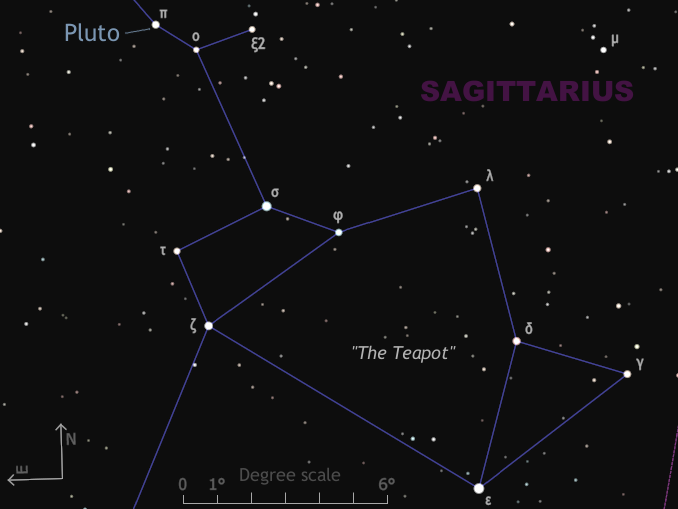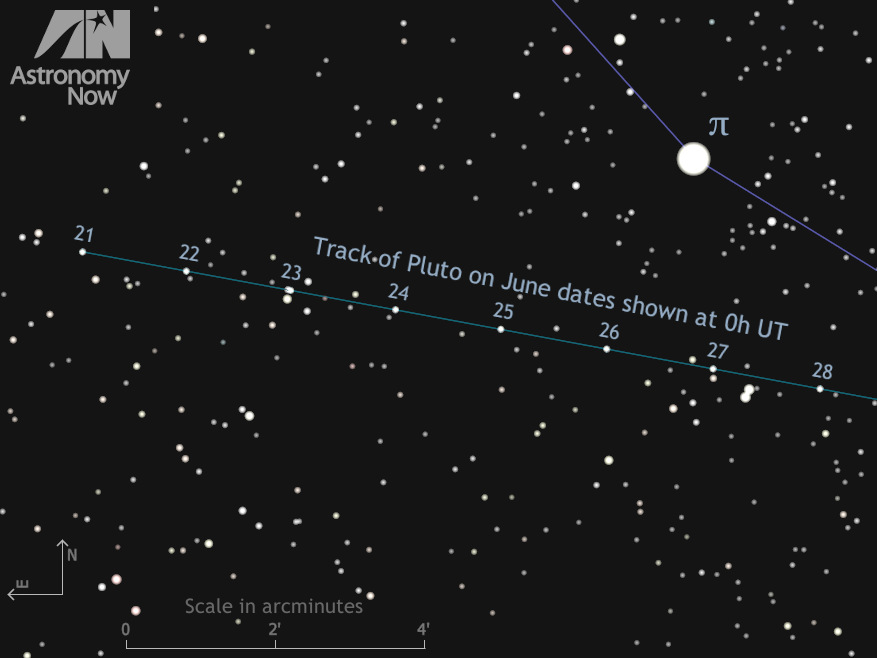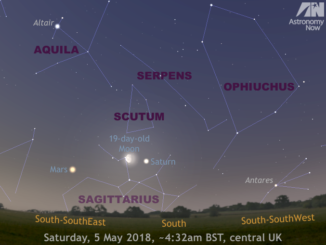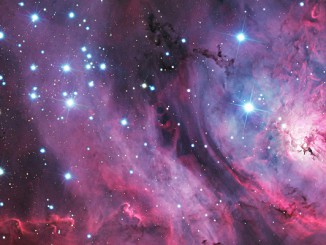
Given that Pluto is glimmering at magnitude +14.1 and presently situated in northeastern Sagittarius against a rich backdrop of faint Milky Way stars, it is a very challenging target for UK-based observers — particularly as it attains a maximum altitude of just 15 degrees in the south around 2am BST as seen from the centre of the British Isles as June draws to a close. Nautical twilight will also be a problem for UK observers, but thankfully the light of a waning crescent Moon will not be a problem from the beginning of July.
Southern Hemisphere observers will have a much easier job finding Pluto as it will be much higher in the sky. But wherever you live, finding Pluto visually requires a 12-inch (30-cm) aperture telescope or larger. In a dark sky, Pluto can be photographed with a telescope of half this aperture in exposures of a few minutes using a DSLR. Visually or photographically, it always helps to have a bright celestial marker nearby when trying to locate such a faint object. Fortunately, then, Pluto passes close to magnitude +2.9 naked-eye star pi (π) Sagittarii on 26 June.
Pi Sagittarii (α=19h 09m 45.8s, δ=-21° 01′ 26″ J2000.0) or 41 Sgr, better known by its proper name of Albaldah, is a yellow-white bright giant some 500 light-years distant. The star lies about 7 degrees, or a 7×50 binocular field of view, to the upper left of the Sagittarius “Teapot” asterism’s “handle” (see the wide-field finder chart above).
Pluto passes 2¾ arcminutes — less than 1/20 degree — from Albaldah around 10h UT on 26 June, a time that favours New Zealand and Australasian observers (this is 10pm local time in New Zealand with the Moon not to rise for another hour). From the next few days until the end of June, the dwarf planet can be found less than one tenth of a degree from π Sagittarii. The detailed finder chart below shows stars down to magnitude +16, or two magnitudes fainter than Pluto.
Inside the magazine
Find out more about observing Pluto on pages 58 and 59 of the July 2016 edition of Astronomy Now.
Never miss an issue by subscribing to the UK’s biggest astronomy magazine. Also available for iPad/iPhone and Android devices.




